2D design
Raster
Adobe Photoshop is a software widely utilized for editing raster images, digital art, and graphic design. The software employs layering to provide flexibility and depth in the editing and designing process, along with powerful editing tools that can accomplish nearly anything. It was created by Thomas and John Knoll in 1988, and John sold it to Adobe Systems in 1989, which later marketed it as "Photoshop." It has since become the industry standard for editing raster graphics. While it is available for both macOS and Windows, it is not supported on Linux. Photoshop is specifically designed to enable users to create and edit raster images with multiple layers. These layers can be transparent and can also serve as masks or filters that modify the images beneath them. It is possible to apply various color models to these layers, including CMYK, RGB, Spot Color, and Duotone and Lap color space. Shadows and other effects like alpha compositing can also be added to enhance the images.
LINKTo create a sketch proposal for an exoskeleton for hand rehabilitation using Adobe Photoshop, I started by opening the program and creating a new document with appropriate dimensions. Then, I used a digital pen or pencil tool to create a rough sketch of the exoskeleton with a light-colored brush. After that, I created a new layer and refined the details using a darker brush, paying close attention to the proportions and anatomical correctness of the design. Next, I used the color palette to select appropriate colors and experimented with different color schemes. Using layer masks, I added shading and highlights to give the exoskeleton a three-dimensional effect. To add text labels or annotations, I used the text tool. Once I was satisfied with my design, I saved the file in an appropriate format and shared it with others for feedback or used it to create a more detailed 3D model of the exoglove.
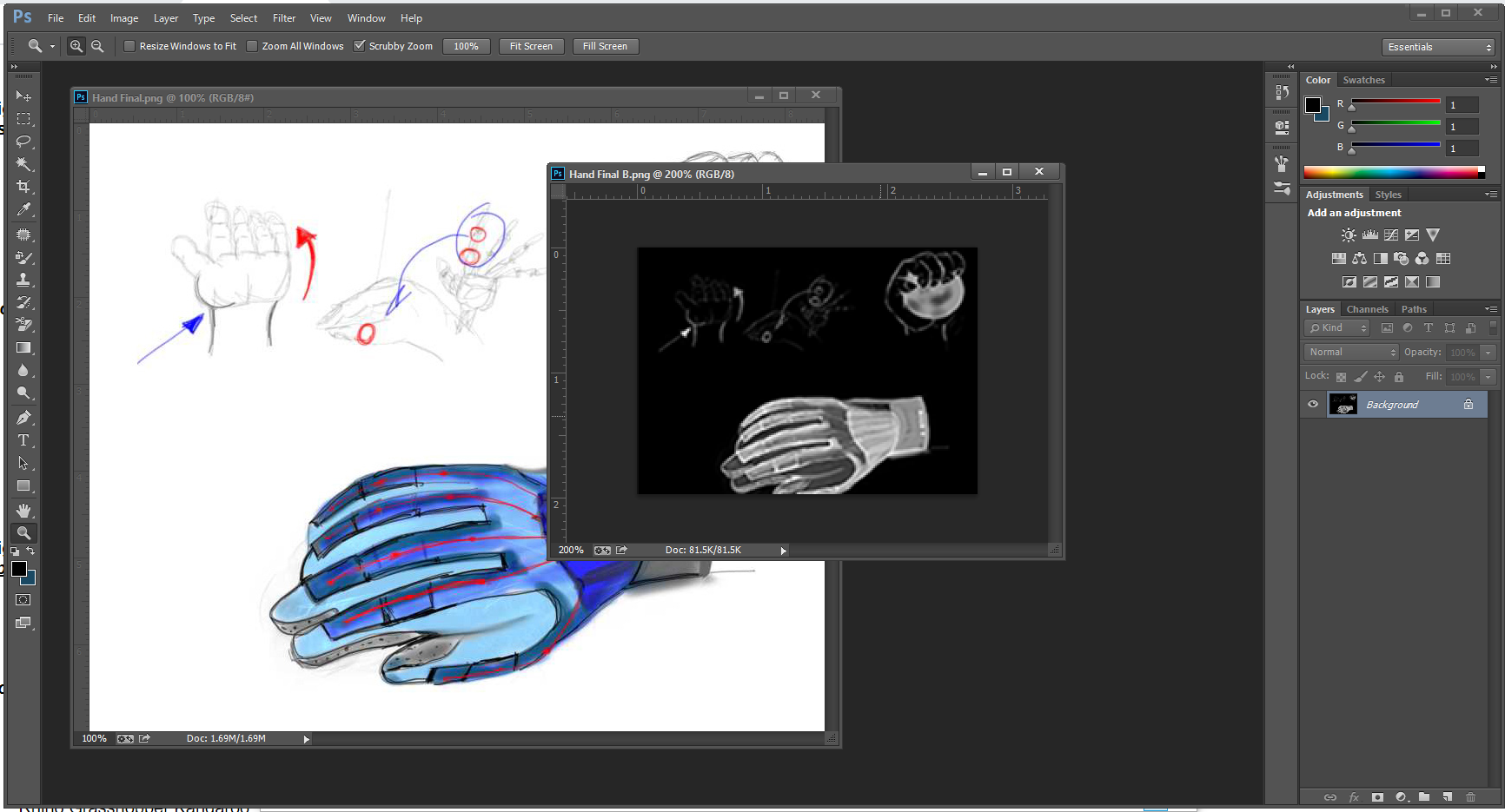
Vector
Adobe Illustrator is a program used for creating artwork, illustrations, and drawings on a Windows or MacOS computer. It was first introduced to the market in 1987 and continues to receive regular updates. The software is included as a part of the Adobe Creative Cloud. Many professionals, including graphic designers, web designers, visual artists, and illustrators, use Illustrator to create high-quality artwork. The program offers a range of advanced drawing tools that can help to reduce the time required to produce illustrations.
How Adobe Illustrator is Used
Adobe Illustrator is a versatile software that can be used to create various digital and printed images, such as logos, illustrations, graphs, charts, and cartoons. One of the standout features of Illustrator is the ability to import a photograph and use it as a reference to trace an object, allowing users to re-color or create a sketch-like appearance of the image. The software also provides various text manipulation tools, making it a great choice for creating designs that combine both text and images, such as postcards and posters. Illustrator's ability to place text around a curve is particularly helpful for creating logos. Moreover, Illustrator is often used for creating mock-ups, which show how a website will look once it is complete, and for designing icons that can be used within apps or websites.
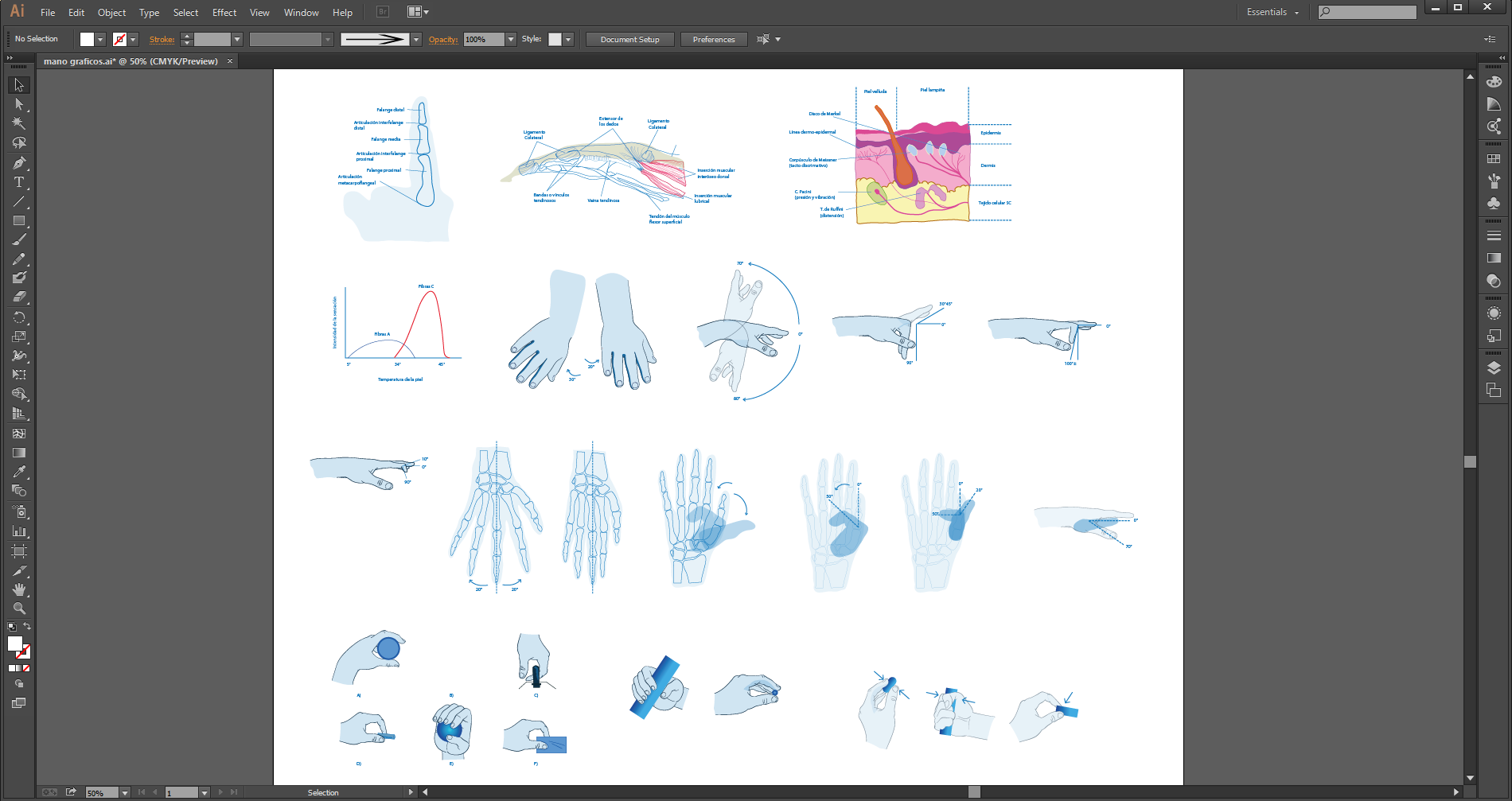
Vector Graphics in Adobe Illustrator
Adobe Illustrator has a unique feature that sets it apart from other graphic design software - the quality of the artwork created using Illustrator is independent of the resolution at which it is displayed. This means that images created in Illustrator can be enlarged or reduced in size without sacrificing image quality. This is due to the fact that Illustrator uses vector graphics, which are made up of mathematical relationships describing lines, arcs, and other parts of an image. Each vector is defined by a node or control point, which has a specific location on the x and y axes of a plane, and determines the vector's path, color, curve, fill, shape, and thickness. Mathematical formulas precisely recalculate the position of vectors when the image is resized, resulting in an image that maintains its quality even when enlarged. In contrast, imaging software like Adobe Photoshop uses pixel grids to render images, which can lead to pixelation and a loss of image quality when an image is scaled up. Illustrator's ability to maintain image quality at any size makes it particularly useful for creating large images such as billboard signs.
LINKTo sketch hands for a study of the design of a hand exoskeleton, I used Adobe Illustrator. First, I opened the software and created a new document with the dimensions I needed. Then, I used the pen tool to create the outline of a hand, drawing each finger individually and adjusting the curves and anchor points as needed. Next, I added details such as the palm lines and knuckles using the brush tool. I also experimented with different stroke widths and colors to make the sketch look more realistic. To create multiple sketches with different hand positions, I duplicated the original hand layer and transformed it into different positions using the rotate and scale tools. Once I was satisfied with the sketches, I exported them as high-resolution PNG files for use in the study.

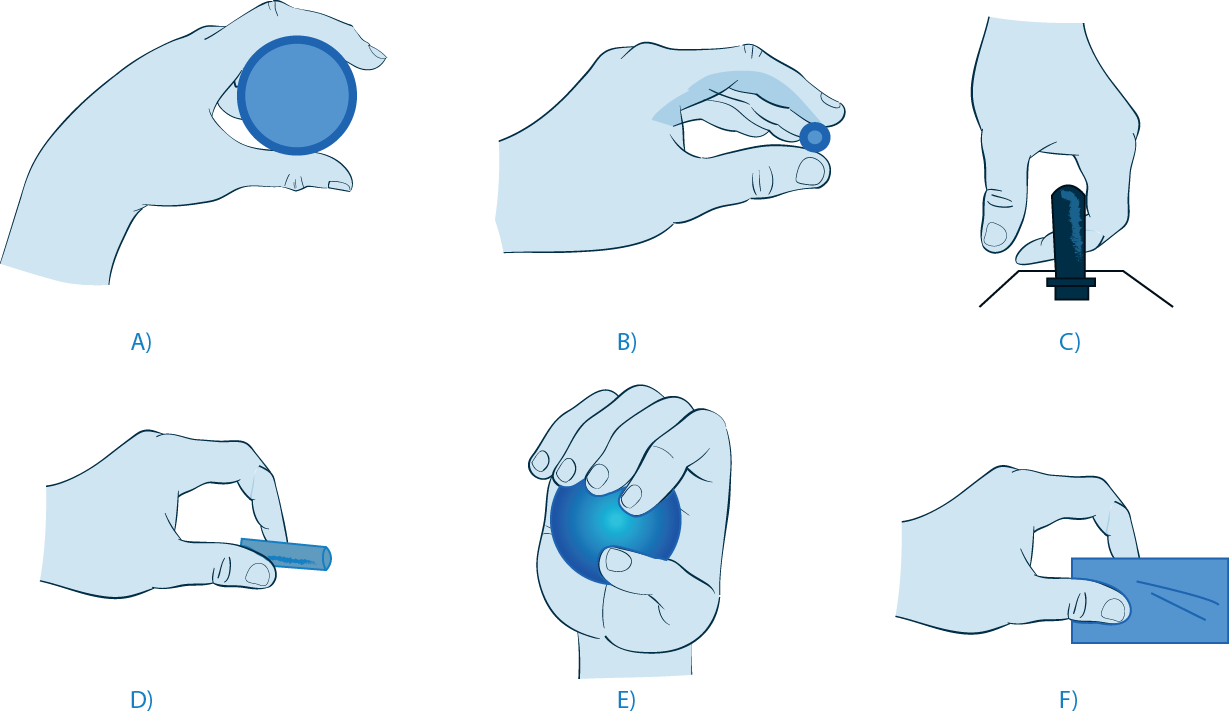
3D design
Autodesk's Inventor is a computer-aided design (CAD) software that utilizes parametric design principles, which are predominantly used for producing technical drawings for mechanical applications. This software is widely used in several fields, including automotive, architecture, and construction, among others. In 1982, John Walker and 12 other partners created Autodesk, which was the first CAD company to be publicly traded. Autodesk provides several software suites, such as AutoCAD, Alias, and 3ds Max, in addition to Inventor.
LINKAs part of my project to design a hand exoskeleton for rehabilitation, I used Autodesk's Inventor to generate a simple 3D model. I began by importing measurements of the human hand and arm, which I used to create a basic outline of the exoskeleton. I then used Inventor's parametric design tools to add detail and adjust the dimensions of the model as needed. I also utilized Inventor's simulation capabilities to test the exoskeleton's strength and ensure it could withstand the necessary forces. Once I was satisfied with the design, I exported the model as a file that could be used for 3D printing or further modification in other software. Autodesk's Inventor proved to be an effective tool for quickly generating a prototype of the hand exoskeleton, and its parametric design features allowed me to easily make adjustments to the model as needed.
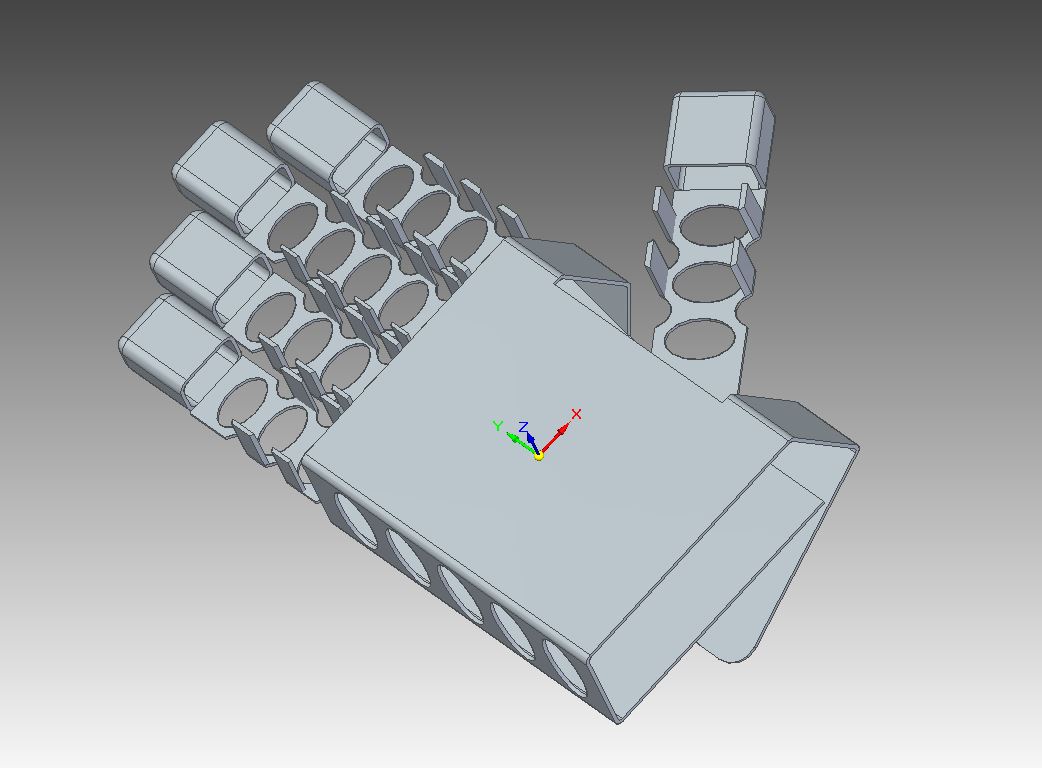
Autodesk 3ds Max is a computer software that primarily focuses on polygon modeling, which is a method of creating 3D models using polygons or geometric shapes. Polygon modeling is extensively used in game design as it offers more control over individual polygons in a model, which allows for greater optimization of the model. The design process in 3ds Max begins with selecting a primitive model from the software’s library, which is then refined according to the user's needs. The latest versions of the software have a user-friendly mesh editing interface with the ‘edit poly’ modifier that moves the tools available in the primitive model, making them available on top of other modifications. 3ds Max offers various primitive shapes, such as cones, pyramids, cubes, and even a teapot, that can serve as a foundation for model development.
LINKI used Autodesk 3ds Max to design and create a hand exoskeleton for hand rehabilitation. I started by selecting a primitive model from the software's library and refined it as needed. Using the polygon modeling feature, I was able to have precise control over individual polygons and optimize the model for its intended purpose. The 'edit poly' modifier allowed me to move available tools in the primitive model higher in the modifier stack, enabling me to use them on top of other modifications. I used unique primitive shapes such as cubes, pyramids, cones, and teapots as a base for developing the model. After refining the model to my satisfaction, I added materials, textures, and lighting to enhance its appearance. Finally, I rendered the model to produce high-quality images and animations, which could be used for presentations or further analysis.

In Autodesk 3ds Max, while polygons are commonly used for model building, other methods are used for surface definition. 3ds Max supports subdivision surfaces that enable surfaces to be smoothened out. Soft Selection is a tool that allows the manipulation of vertex clouds into the desired shape without distortion from unwanted shapes, resulting in smooth surfaces. The sculpting brush feature permits users to draw smooth surfaces by hand if polygons produce a distorted image, but it has limited functionality. The NURBs feature in Autodesk 3ds Max employs mathematical formulas to create smooth surfaces, which is particularly useful in accurate simulations of mechanical parts in automobile and instrument design. Custom lighting can be used in 3ds Max, and shadows and highlights can be 'burned' into the rendered image. These settings are mostly used for game imagery because pre-fit values of shadows and highlights enable the game engine to process less data, improving game speed and performance, as the model is already painted with the required modifications.
LINK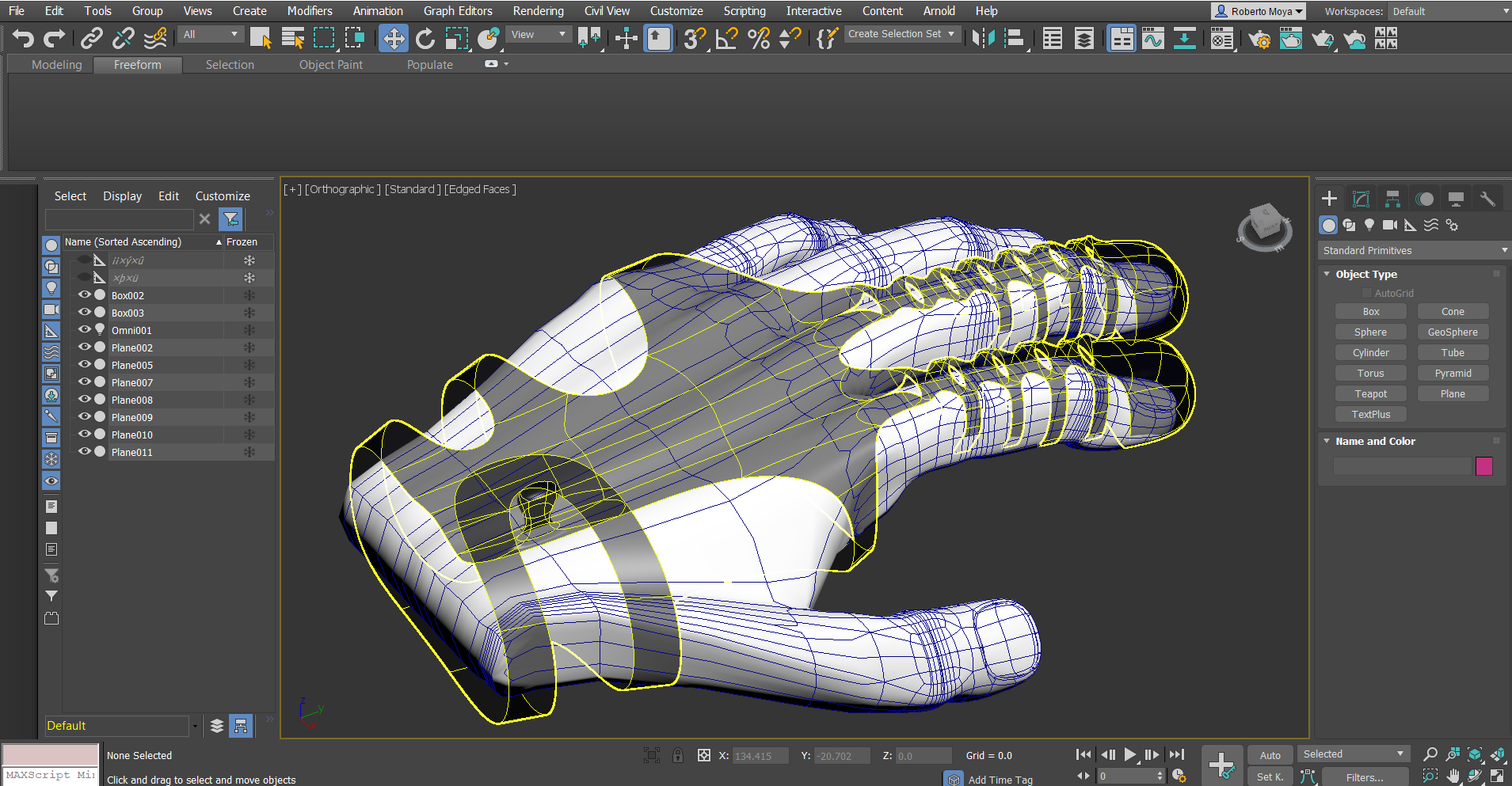
Fusion 360 is a software tool used for CAD/CAM, which enables collaborative product development in the cloud. The software allows for the exploration and iteration of product designs, as well as the ability to collaborate with team members who may be in different locations. With Fusion 360, mechanical design, organic shapes modeling, and manufacturing can all be achieved in one complete package.
LINKAs a designer, I used Fusion 360 to create a hand exoskeleton for hand rehabilitation. I started by sketching the basic structure of the exoskeleton in 2D using the sketching tools. I then used the extrude tool to give the design depth and make it 3D. I used the sculpt tool to refine the surface of the exoskeleton and give it a smooth finish. To make sure that the exoskeleton fits the hand perfectly, I used the parametric modelling tool to make adjustments to the design based on the measurements of the hand. The software also allowed me to test the exoskeleton virtually by simulating its performance in different scenarios. Once I was satisfied with the design, I exported it to a format suitable for 3D printing so that the exoskeleton could be manufactured. The cloud-based nature of Fusion 360 also allowed me to collaborate with other team members and stakeholders, who could review and provide feedback on the design in real-time.
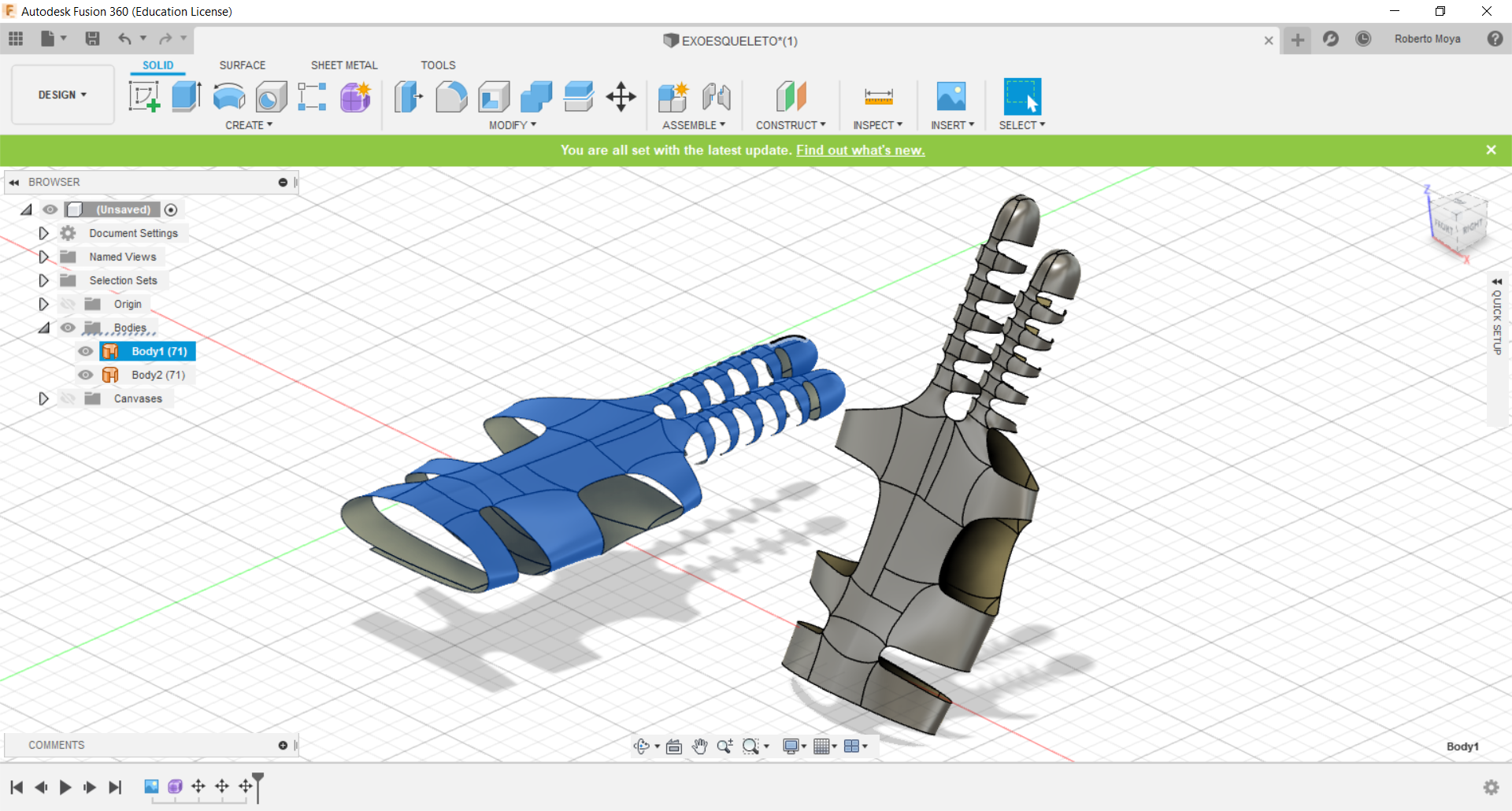
Fusion 360 helps students and educators prepare for the future of design. It's the first 3D CAD, CAM, and CAE tool of its kind, connecting your entire product development process into one cloud-based platform. Download the software today, then turn your ideas into reality.
LINK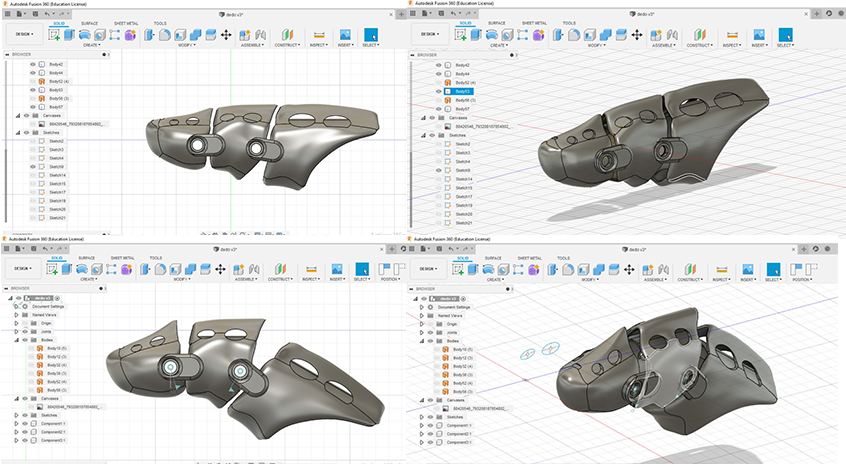
Conclusion
- The use and exploitation of the different types of software that have been presented I have used in recent years, however it is very difficult to master one hundred percent. What is presented is an approach to each of them and how I use them to obtain examples aimed at the manufacture of the final project.
- Based on the experience I have from my profession, the recommendation is to learn specific software and identify all the tools so that in this way you can venture into the use of other programs by searching for similar tools.
- The modeling presented has a basic level in terms of the development of the final project, different programs were explored to find the ease of organic digital modeling. The recommendation is to master both mechanical modeling and organic modeling software.
- Using software that is loaded in a cloud is one of the most appropriate options when working with innovation currently, the best finding I had was Fusion 360.
- I will not share all the files because I am using some of them for my academic research.